With the wind being 5 mph over my 10mph limit – the observatory roof could go airborne over this – and a clear Moonless night, it seemed a shame to miss out on some observing. Having just put the TMB back on the mount and collimated it to the big scope, I decided to take my fairly new 10×60 finder scope off the Losmandy and mount it on the Alt/Az Sabre mount.
While a little small in aperture for deep Sky work, I thought it might be an interesting exercise to find how what I could actually see through it, and indulge in some badly need star hopping practice.
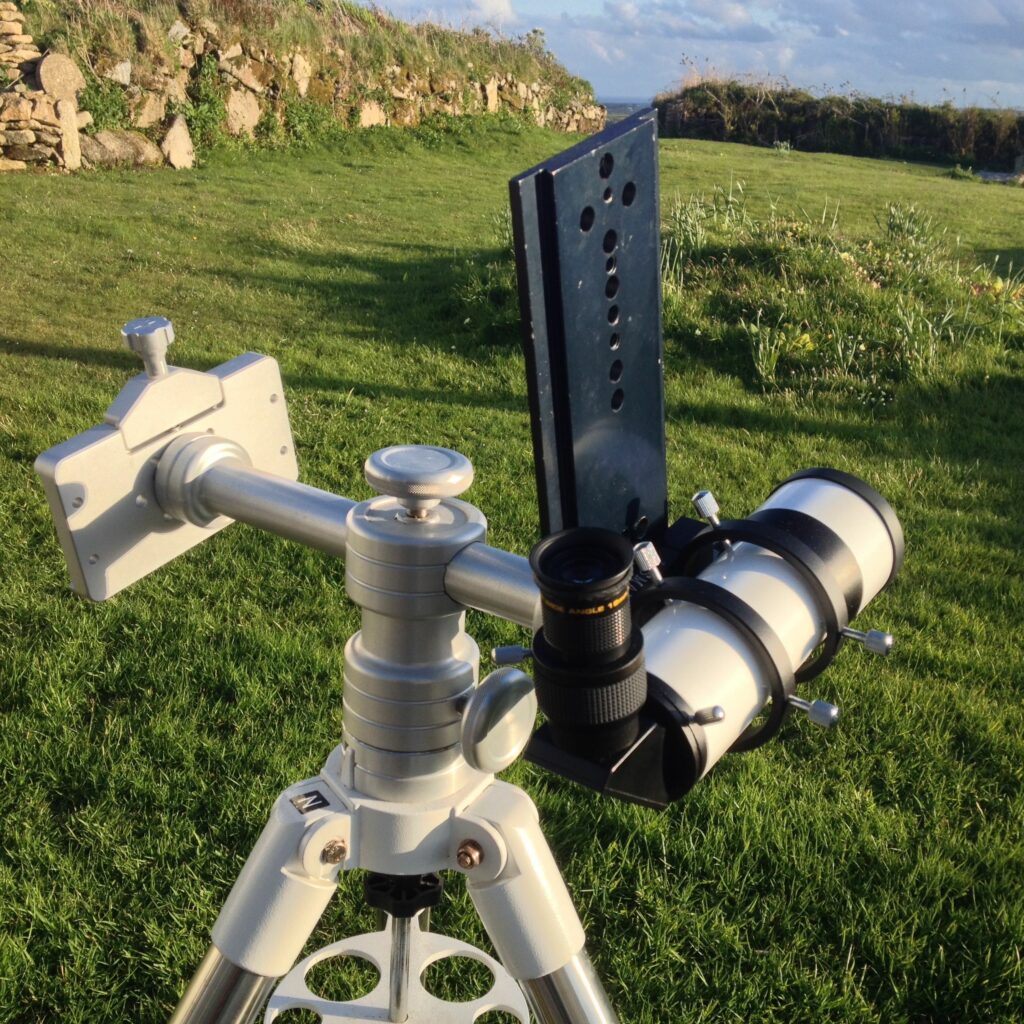
With the supplied 23mm reticule eyepiece I get a 5 degree FOV and x10 magnification. I also have a redundant Meade 18mm SWA eyepiece, which as well as offering a less distorted view at the edges, provides a similar FOV. Unlike most of my other observations, I didn’t record weather or seeing conditions.
Being windy, I set the scope up in the doorway of the conservatory, which allowed the use of a comfortable chair to observe from, while offering shelter from the elements.

Rather than use traditional star charts – which I find too awkward to use in the field – I fired up my iPad loaded with SkySafari 4. I use this combo when observing with the big scope, so for this session, I changed the view to Alt/AZ and entered the scope and eyepiece combo to provide an ‘on screen’ FOV reticule. The image above shows the whole FOV of all the objects I observed as well as the scopes FOV at the centre.
The Tour
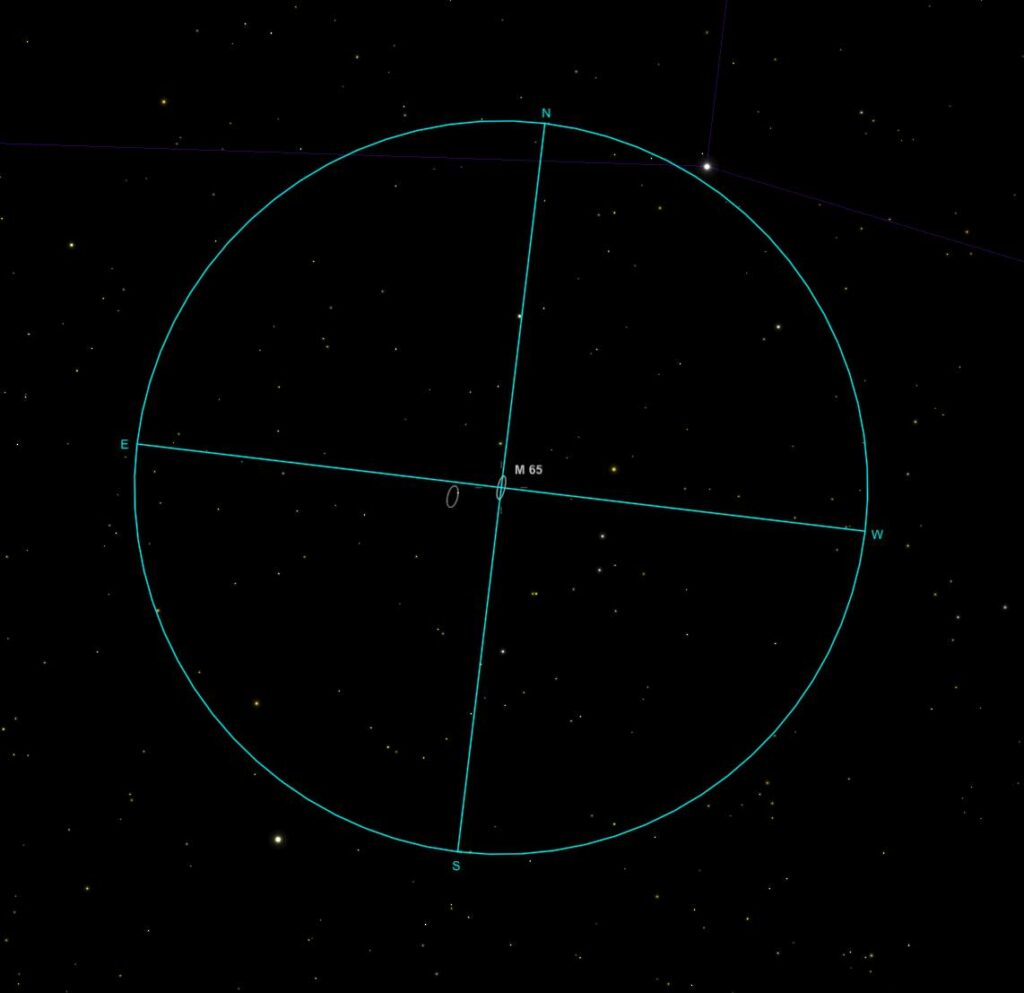
The star hop started at Beta Leo with a 1.5 FOV hop to the West . This placed M65 and M66 in the centre. Both were just visible with but I didn’t see the third element of the Leo Triplet NGC3628.
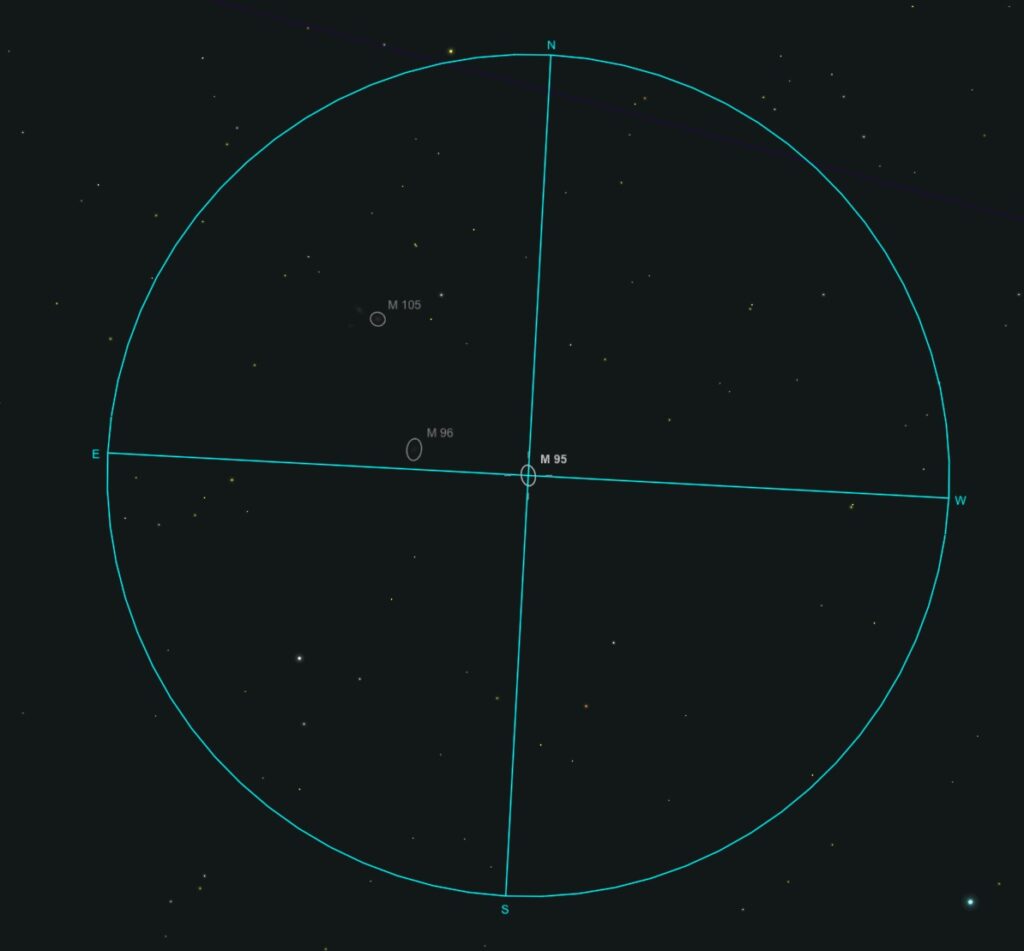
Then off to M95 and M96 with another two FOV hop to the West. Both these were easily visible with AV after which I found could be seen with direct vision.
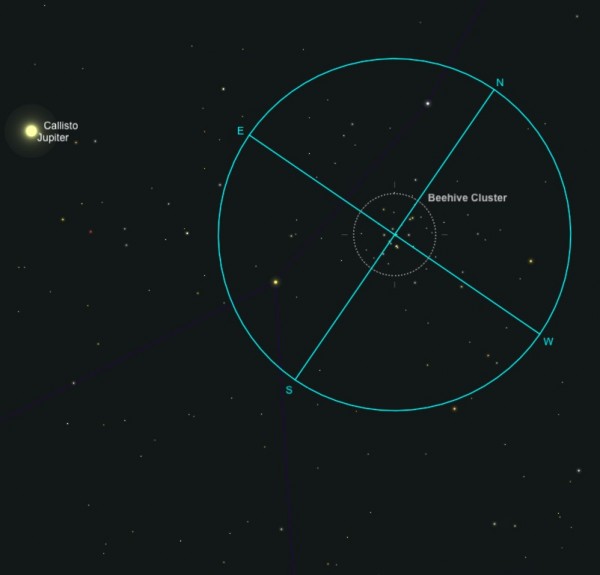
A manual slew straight to Jupiter, followed by a 1.5 FOV hop NWW to M44 and the Beehive cluster. This was quite pretty – I didn’t count how many stars were visible.

A one FOV SSE had me on M67. This was very small and with AV looked more like a fuzzy galaxy.
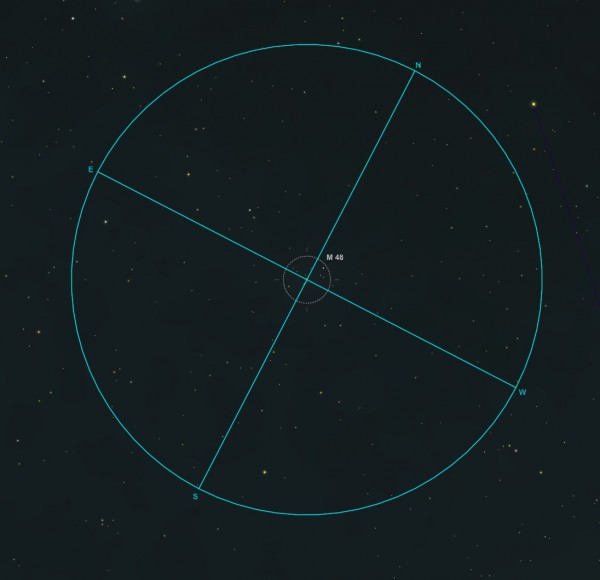
Then 3.5 FOV hops to the SW I came across M48. Like M67 is was only visible as a faint fuzz that brightened slightly with AV
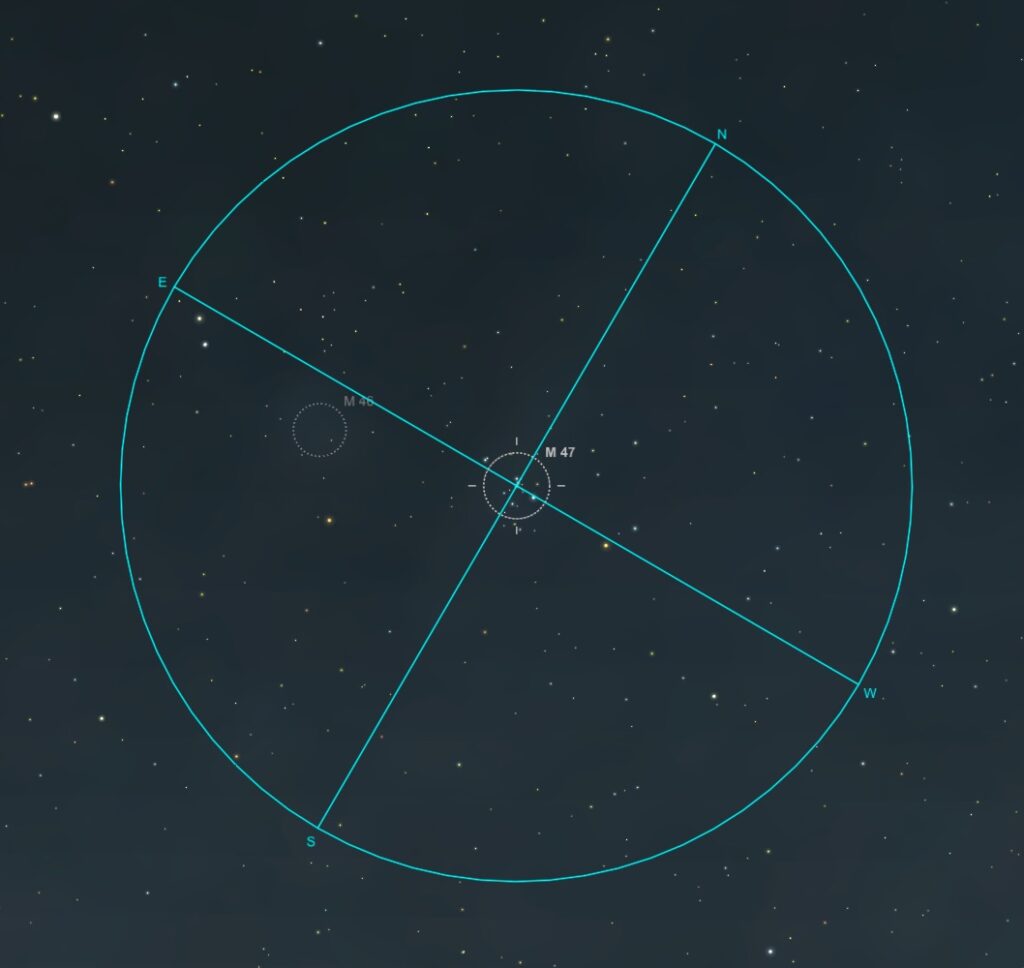
Another Two FOV hops to the SW and I find I’m now standing at the scope, not sitting down as I had started. Zooming out the iPad’s view shows I’m observing two objects M46 and M47. Both these are really hard work, even with full on AV, but I guess thats not surprising as the murk at these low altitudes, as always, is thick and ever present. Notice the image background is now a milky as opposed to a pure black at the start!
One thing that I did find really helpful when hopping more than one or two FOV hops away from my starting point was to align the reticule grid of the eyepiece in the same orientation as the one of the eyepiece FOV grid on the eyepad. I found this serves two useful functions.
First, I think its good to get into the habit of describing direction in terms of North South etc. This at least provides a consistency in my written logs.
Secondly, once the eyepiece and iPad grids are aligned for the same bit of sky, its then very easy to draw an imaginary line between my starting position and the target on the iPad and mentally transfer that angle when looking through the eyepiece to move the scope the requisite number of hops.
All in all, an enjoyable 80 minutes practising a technique that I’m crap at.